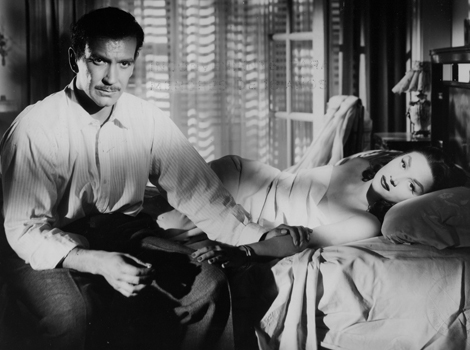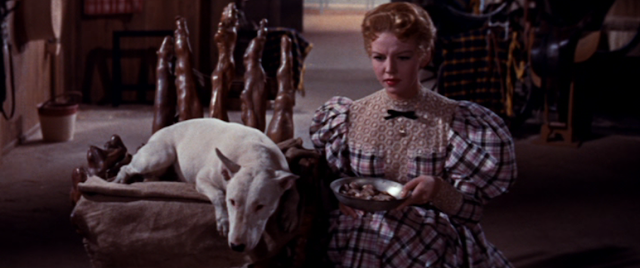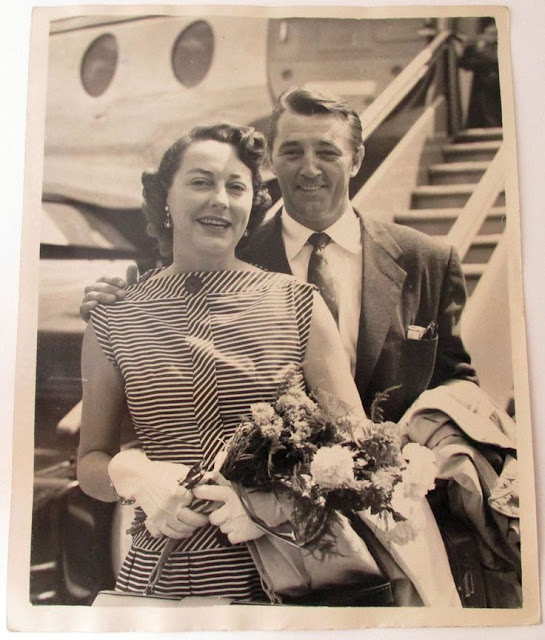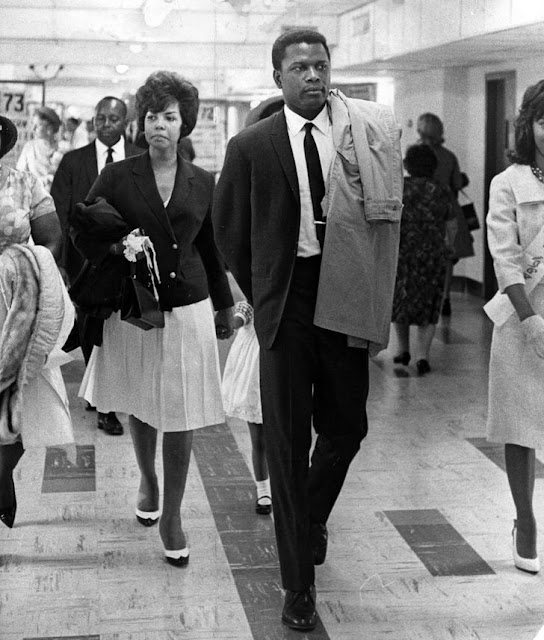 |
| Los Tallos Amargos |
At the 2016 TCM Classic Film Festival, attendees were treated to a special screening of
Los Tallos Amargos (translated in English as The Bitter Stems), a 1956 Film Noir from Argentina. Eddie Muller of the Film Noir Foundation introduced the film and regaled us with the fascinating story of how this little known Noir, never before screened in English, made it from Argentina to the US.
Eddie Muller and his wife traveled to Buenos Aires, Argentina, shortly after a more complete version of
Metropolis (1927) was discovered in a museum vault in 2008. Muller met with Fernando Martin Peña, whom he described as “one of the greatest cinephiles in the world.” Peña is the director of the Mar del Plata International Film Festival and a film curator for the MALBA in Buenos Aires. Muller recalled that Peña is “a very distrustful sort” so it was a special treat when Peña invited him to a private screening of his personal collection of 16mm films. Among those was what Muller referred to as “extraordinary” and a “hardcore Noir”: Los Tallos Amargos (1956). At the TCMFF screening he warned the audience “If you entered the theater in a good mood, sorry! Because you’re going to experience Film Noir the way Film Noir is really supposed to be.”
Los Tallos Amargos was an adaption by Sergio Leonardo of the Adolfo Jasca’s 1955 novel of the same name. It was directed by
Fernando Ayala and starring Carlos Cores, Pablo Moret, Aida Luz, Julia Sandoval and Vassili Lambrinos.
 |
| Carlos Cores and Julia Sandoval in Los Tallos Amargos (1956) |
Carlos Cores plays Alfredo Gaspar, a journalist at a Buenos Aires newspaper. Down on his luck and completely broke, he learns of a get-rich-quick scheme devised by Hungarian expat Liudas (
Vassili Lambrinos). He's come up with a fake correspondence course in order to extort journalists. Alfredo has his doubts but Liudas convinces him in the end. After a brief period of success, the situation begins to sour as Alfredo's paranoia intensifies. He grows suspicious of Liudas which drives him to commit an act of desperation. The second half of the film deals with Alfredo's cover-up, guilt and the gruesome realization of what he's done.
The first half of the film is told in a flashback just as Alfredo plans to commit the act that drives the second half of the story. There is a dream-like sequence where we learn more about Alfredo's troubled upbringing and we hear Alfredo's thoughts in a voice-over. Deception, revenge, guilt, desperation, paranoia are all themes of this gripping Noir.
Los Tallos Amargos won the Silver Condor Award (Premio Cóndor de Plata) the following year. According to Muller it’s Argentina’s equivalent of the Best Picture Oscar. Muller also noted the fantastic score by
Astor Piazzolla, a musician known for his Nuevo Tango which blends Jazz, Classical Music and Tango. Piazolla’s work resulted in “a remarkably innovative score for this film where he at any time is able to utilize any type of musical form to convey what he wants to convey emotionally” said Muller. For example, there is a scene when Cores is spying on Lambrinos at a night club and the music intensifies as the situation grows more desperate.
Then there is the work on the film by Chilean cinematographer
Ricardo Younis, a protégé of
Gregg Toland who worked on Citizen Kane (1941) and won the Oscar for his work on Wuthering Heights (1939). According to Muller, at one point the American Cinematographer’s Magazine named
Los Tallos Amargos one of the best photographed movies of all time.
After having seen Peña’s 16mm print, Muller took on
Los Tallos Amargos as a project. He proclaimed to Peña “I will do whatever it takes to raise money to restore this film and to have it finally seen in English-speaking countries.” It had never been released with English subtitles nor had it been distributed in the English-speaking world. One day Peña called Muller up to tell him that he met the family of one of the producers of
Los Tallos Amargos and that a camera negatives of that film and several other films were currently sitting in the basement of the family estate. Peña sent Muller photos of the discovery and he was horrified. Muller remembers:
“It’s a film curator’s nightmare. To see these films in the condition they were stored, weeds growing up from the floor, no air-conditioning whatsoever, the cans completely rusted shut. Amazingly, we were able to salvage the original camera negative of this film. There were other films in that room that were like bricks. When you take them out of the can it’s just solid. There’s no way you can save these movies. I consider it somewhat like Providence that this film was not in that condition.”
With the help of the UCLA Film & Television Archive and the Hollywood Foreign Press Association’s Charitable Trust they salvaged
Los Tallos Amargos, added the subtitles and digitally restored the soundtrack (which came from Peña’s 16mm print because the original camera negative was missing the sound). The end result was a beautiful product ready to be screened to eager Film Noir-loving audiences.
Muller later shared with us what ended up being my favorite anecdote from the entire presentation (and the entire festival too. I still think about it today). Actor Vassili Lambrinos, who plays Liudas, made a surprise appearance made a surprise appearance at the MoMA screening of the film earlier this year. He's 90 years old, lives three blocks from the MoMA and had never watched the film on the big screen. Can you imagine? That must have been a thrilling moment for everyone involved. MALBA shares the following story from Peña who was also at the event:
[Spanish] “Lambrinos contó que se animó al protagónico de Los tallos amargos porque Ayala, que era un gran director de actores, le dio la confianza suficiente para hacerlo y lo cuidó mucho durante el rodaje. Nunca se tomó en serio su carrera como actor y ni siquiera recibió el premio al mejor actor de reparto que se ganó por el film, porque simplemente se olvidó de asistir a la ceremonia. Lo recibió Ayala en su lugar. Hasta hoy, nunca había visto la película con público. La vio en privado con el equipo en el laboratorio, apenas terminada, y luego muchos años después, en un VHS que le grabó un amigo”.
[English] “Lambrinos remembers that he was encouraged to act in Los Tallos Amargos because Ayala, who was a great actor’s director, gave him confidence enough to do it and took great care during the filming. He never took his acting career seriously and didn’t receive the best actor award for his part because he forgot to show up for the ceremony. Director Ayala received the award on his behalf. Until today [the MoMA screening], Lambrinos had never seen the film with an audience. He saw it privately in the film lab, having just been edited and then years later when a friend recorded the film on VHS.”
Muller wasn’t kidding when he called this film a “hardcore noir”.
Los Tallos Amargos digs deep into the darkest facets of the human condition. South American stories have a long tradition of dark tales which continues today and is apparent when you look to the novels and films from this part of the world. I have a particular interest in South American fiction but have never been able to full immerse myself because of how dark and disturbing these stories can get. It’s the reason why I could only manage to read one chapter of Alejandro Jodorowsky’s
Where the Bird Sings Best and why I hid behind a blanket during some scenes of the Argentine film
Wild Tales (2014) (Relatos Salvajes). This is heavy stuff and not for the faint of heart. But there is such a rich culture of literature and film from this region and I will always gravitate towards it. And it’s why figures like Jorge Luis Borges continue to fascinate me.
 |
| Carlos Cores in Los Tallos Amargos (1956) |
As someone who is fluent in Spanish I was excited to see a classic film in a language other than English. While it’s special that this film now has English subtitles for non-Spanish speakers, I tried my best to ignore them and concentrate on listening to the beautiful Argentinian accents of the actors on screen.
This film might polarize Noir fans. It might be too strange a Noir for traditionalists but exciting and different enough for Noir fans who seek discover something new. I really enjoyed the film, especially on second viewing when my mind was a bit fresher.
For home viewers,
Los Tallos Amargos only exists in
the original Spanish with no subtitles on YouTube. It's a terrible print in comparison to the restoration we saw at TCMFF. I hope it'll be released in the near future on DVD/Blu-Ray so we can all enjoy a clearer image and better sound.
Sources:
Eddie Muller’s presentation at the 2016 TCM Classic Film Festival
MALBA's article on the MoMA screening



























































